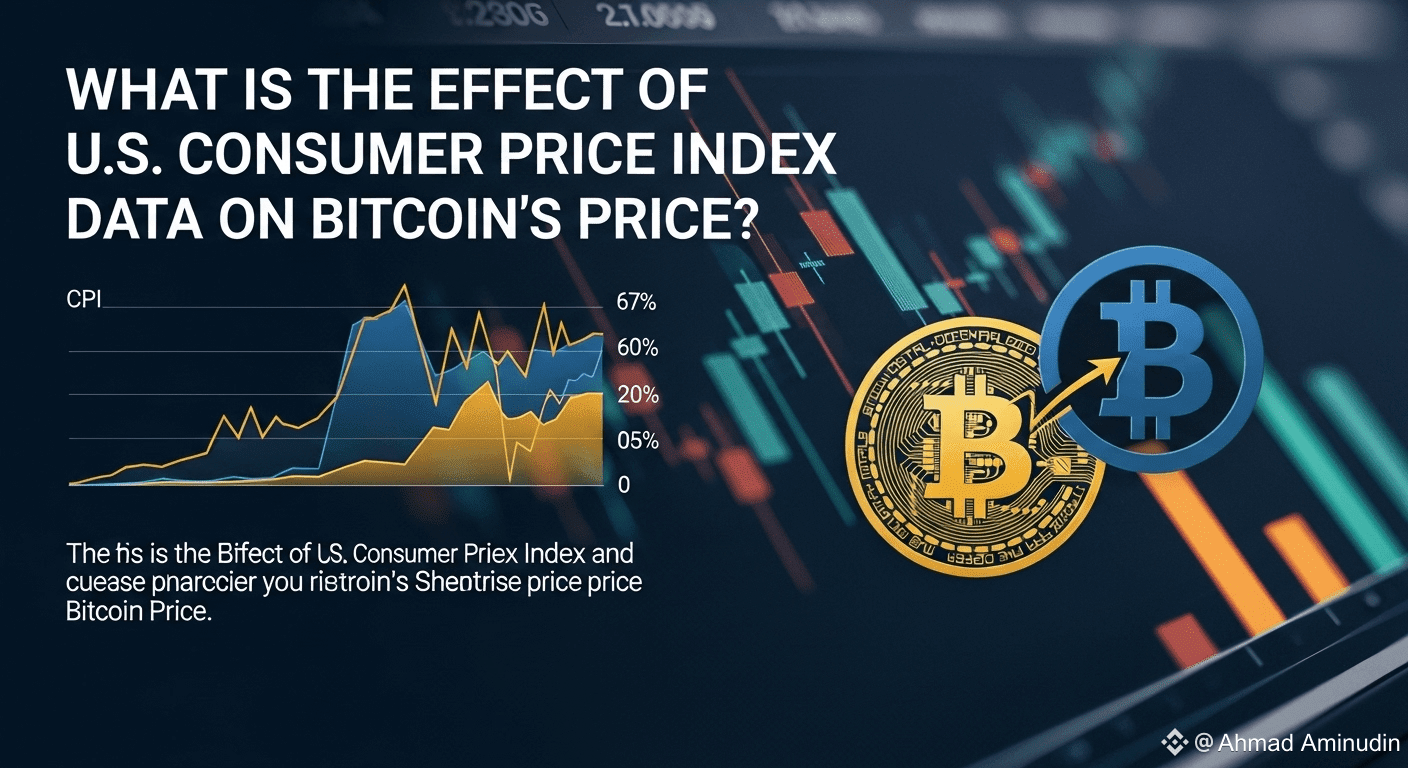
Every U.S. inflation report (CPI) release sends palpable tremors through the crypto market. I can't deny that sensation—the electric tension as traders and investors hold their breath, anticipating numbers that frequently act as the catalyst for Bitcoin's legendary volatility. Why? Because embedded within those inflation percentages lie critical clues about the Federal Reserve's next move, ultimately deciding whether money floods toward Bitcoin or flees to perceived "safer" harbors.
I've come to realize the connection between U.S. inflation and Bitcoin runs far deeper than simple price correlation. It's a complex interplay of monetary policy, global risk appetite, and Bitcoin's own evolving narrative. When CPI figures land – especially when they deviate sharply from market expectations – the ripple effects are immediately visible on the BTC/USD chart. The driving force behind this? One name: The Federal Reserve.
The CPI isn't just a monthly shopping basket statistic; it's the Fed's primary compass. When inflation surges past forecasts (like the June 2022 peak of 9.1%, a 40-year high), alarms blare at the Eccles Building. The Fed's response is typically decisive: hiking its benchmark interest rate (the Fed Funds Rate). And this is the pivotal moment for Bitcoin. Higher rates fundamentally reshape the investment landscape:
Soaring Opportunity Cost: Traditional assets like U.S. Treasury bonds suddenly offer attractive yields with relatively lower risk. Institutional and retail investors reassess their exposure to volatile assets like Bitcoin. Capital once chasing high growth in crypto might find "resting" in interest-bearing instruments more appealing. The result? Selling pressure often hits BTC.
A Stronger U.S. Dollar: Hawkish Fed policy attracts global capital flows, boosting the USD exchange rate. Since Bitcoin is predominantly priced in Dollars (BTC/USD), this strength automatically makes it more expensive for investors using other currencies. Global demand can weaken.
Dominant "Risk-Off" Sentiment: High inflation triggering rate hikes often fuels recession fears. Amid this uncertainty, investors gravitate towards safe havens like gold or the Dollar itself, reducing allocations to high-risk assets like Bitcoin.
Conversely, a CPI reading below expectations (or showing a consistent cooling trend) feels like a fresh breeze for crypto. Take October 2023. When the core CPI (excluding volatile food and energy) rose just 0.2% monthly (below the 0.3% forecast), the market reacted exuberantly. Why? Because it signaled room for the Fed to turn more "dovish" – potentially pausing further hikes or even eyeing future cuts. And Bitcoin? It surged over 10% in a single day! The logic reverses:
Low Yields Lose Allure: With rates stagnant or potentially falling, returns from bonds or savings accounts lose their shine. Investors reignite their hunt for assets offering substantial growth potential, including Bitcoin. The "search for yield" comes roaring back.
A Weaker U.S. Dollar: Expectations of looser monetary policy tend to soften the USD. Bitcoin priced in Dollars becomes relatively cheaper for international buyers, potentially boosting global demand.
Return of "Risk-On" Euphoria: Market sentiment flips positive. Investors regain confidence to embrace risk, and assets like Bitcoin, with their high appreciation potential, become magnets for capital inflows once more.
However, I must admit: predicting Bitcoin's precise reaction to CPI isn't an exact science. Markets often move on expectations well before the official data drop ("buy the rumor, sell the news"). If CPI aligns with forecasts, the volatility might be muted. Crypto-specific catalysts – like regulatory shifts, network upgrades (think Taproot), or whale activity – can also dominate the short-term narrative, overshadowing CPI's impact.
For me, the CPI's effect on Bitcoin's price is undeniable, particularly as a potent short-term volatility catalyst. This data is the primary window into the Fed's thinking. It's the Fed's monetary policy that's the true protagonist, steering global capital flows via interest rates and shaping overall risk appetite. Bitcoin, as a high-risk, high-growth asset still seeking widespread adoption, remains acutely sensitive to shifts in these capital flows and risk perceptions.
So, the next time headlines scream about soaring or cooling U.S. inflation, don't dismiss it as mere economic noise. See it as a powerful signal about the monetary environment Bitcoin will navigate in the coming weeks and months. Will it face stiff headwinds from rising rates, or gentle tailwinds from potential easing? Understanding the transmission chain – from CPI to the Fed, to interest rates, and ultimately to market sentiment – is a vital tool for navigating the crypto market's relentless waves. How do you typically brace for impact when CPI data drops?